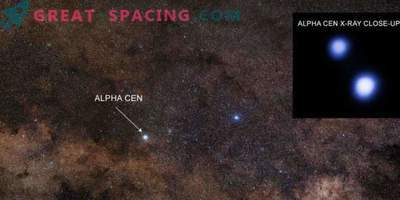
In March 2017, scientists were able to fix a massive flare on the nearest star after the Sun - Proxima Centauri. Now there are questions about whether the Proxima b system will be suitable for life.
At peak brightness, the flash was 10 times brighter than the largest in the Sun at the same wavelength. It can be said that it was not an ordinary day for the M-dwarf star. The flash was able to increase the brightness of Proxima Centauri 1000 times in just 10 seconds. Before this, a smaller flash occurred. To sum up, the event lasted less than 2 minutes in 10 hours of observation.

Brightness of Proxima Centauri, observed by ALMA for two minutes on March 24, 2017. The massive starburst is marked red, the smaller early flash is orange, and the enhanced emission is blue. At peak, the star increased brightness 1000 times. Star flares are formed when a shift in a star magnetic field accelerates electrons to speeds close to the light. Accelerated electrons are in contact with a highly charged plasma, which constitutes a large part of the star. This leads to an eruption that generates radiation across the entire EM spectrum.
Researchers believe that an outbreak could destroy the possibility of having life on Proxima b. Over billions of years of exoplanet existence, such flashes could evaporate the atmosphere, oceans, and sterilize the surface. New data also shows that there is no huge dust accumulation near Proxima Centauri, as previously believed.











































